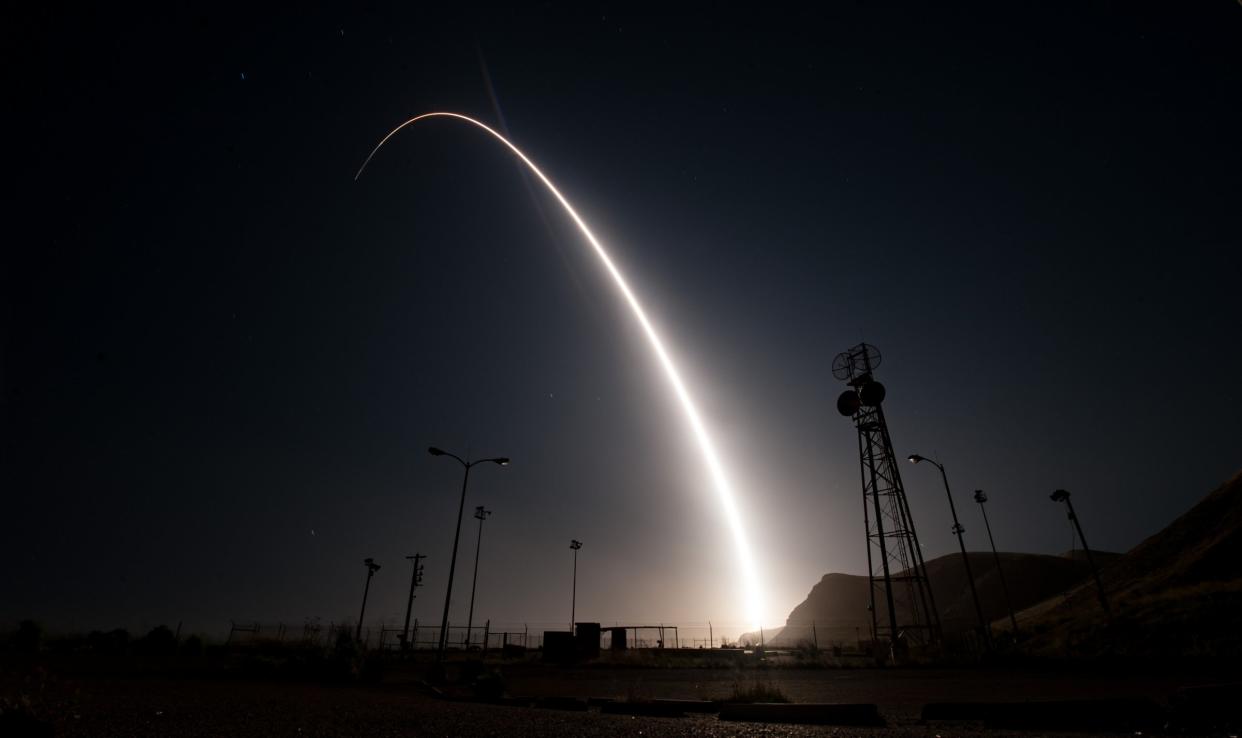Here's what it looks like when the US fires a nuclear weapon

US Air Force photo by Senior Airman Ian Dudley
The US launched an unarmed intercontinental ballistic missile from California's Vandenberg Air Force Base on Wednesday.
Though nuclear tensions around the world have been running high, the launch was completely routine, and had been planned three to five years in advance.
The US has dozens of ICBM silos all around the country as part of the nuclear triad, or three types of nuclear forces that guarantee the nation's ability to strike back in the event of nuclear war.
Simply put, even if the entire world decided to attack the US simultaneously, there's no way that every ground-based missile, nuclear bomber, and ballistic missile submarine could be destroyed at once. At least one leg of the triad would survive, meaning the US could strike back with devastating nuclear force.
The ICBM launched on Wednesday flew about 4,800 miles from Vandenberg to a test range near the Marshall Islands in a matter of 30 or so minutes.
While the US's nuclear strategy has been long established, it still has to be tested. In the footage below see how the US makes sure its nuclear weapons are accurate and reliable — and how it would fire back in the event of a nuclear war.
NOW WATCH: EX-UNDERCOVER DEA AGENT: What I did when drug dealers asked me to try the product
See Also:

 Yahoo News
Yahoo News 

